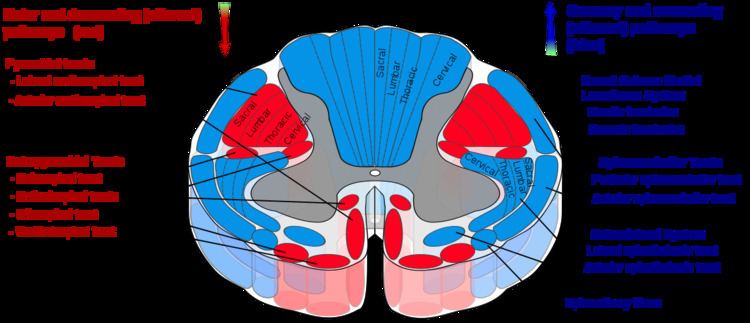NeuroNames hier-802 Dorlands
/Elsevier t_15/12817131 FMA 72639 | NeuroLex ID Reticulospinal tract TA A14.1.04.124 | |
 | ||
The reticulospinal tract (or anterior reticulospinal tract) is an extrapyramidal motor tract that descends from the reticular formation in two tracts to act on the motor neurons supplying the trunk and proximal limb flexors and extensors. It is involved mainly in locomotion and postural control, although it does have other effects as well.
Contents
Functions
1. Integrates information from the motor systems to coordinate automatic movements of locomotion and posture
2. Facilitates and inhibits voluntary movement; influences muscle tone
3. Mediates autonomic functions
4. Modulates pain impulses
5. Influences blood flow to lateral geniculate nucleus of the thalamus.
Components
The tract is divided into two parts, the medial (or pontine) and lateral (or medullary) reticulospinal tracts (MRST and LRST).
The sensory tract conveying information in the opposite direction is known as the "spinoreticular tract".
Clinical significance
Mostly inhibited by the corticospinal tract, if damage occurs at the level of or below the red nucleus (e.g. to the superior colliculus) it is called decerebration and causes decerebrate rigidity, an unopposed extension of the head and limbs.
The reticulospinal tracts also provide a pathway by which the hypothalamus can control sympathetic thoracolumbar outflow and parasympathetic sacral outflow.
